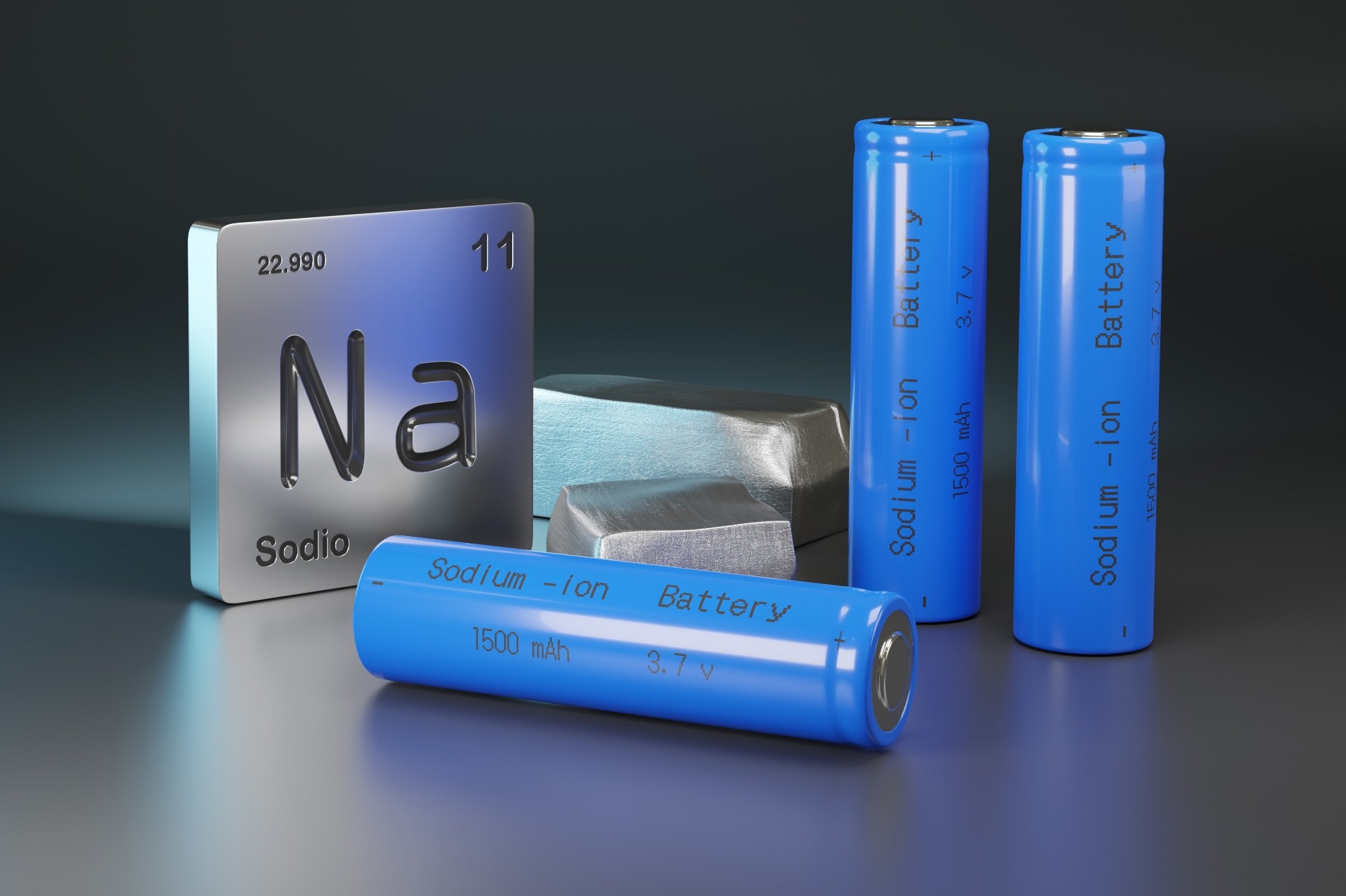A recent article in Scientific Reports proposed the fabrication of three-dimensional (3D) MoS2/graphene oxide (MoS2/GO) composites using a layer-by-layer method on SiO2 templates as anodes for high-performance sodium-ion batteries.

Image Credit: Juan Roballo/Shutterstock.com
Background
Realizing sustainable energy sources necessitates efficient renewable power sources. The reaction mechanism of sodium-ion batteries (SIBs) is similar to that of lithium-ion batteries (LIBs). Thus, SIBs are promising alternatives to LIBs in energy storage systems owing to the ample sodium reserves on Earth.
However, the commercial application of SIBs is inhibited due to slow kinetic processes and poor energy density, necessitating anode materials with high conductivity, fast sodium ion (Na+) diffusion pathways, and durable structures.
Two-dimensional (2D) layered transition metal chalcogenides such as MoS2 are attractive SIB anode materials due to their high theoretical capacity and layered structure for Na+ intercalation/extraction. However, low conductivity, slow Na+ diffusion, and large volume change during charging/discharging restrict the rate capability and cycle stability of MoS2.
Adding carbonaceous elements such as GO with promising optical, electrical, and mechanical characteristics can overcome these limitations. Thus, layered 3D MoS2/GO were fabricated in this study using amino-functionalized SiO2 nanospheres as templates.
Methods
SiO2 nanospheres (100 nm diameter) were synthesized as templates with amino-functionalization and subsequently wrapped with GO. GO with negative surface charges could electrostatically interact with the positively charged SiO2 nanospheres. GO was synthesized using Hummer’s method.
The GO-wrapped NH2-SiO2 templates were modified with (NH4)6Mo7O24·4H2O and CS2. Subsequently, hydrofluoric acid was used to eliminate the SiO2 nanospheres, yielding 3D MoS2/GO. Additionally, 3D MoS2 (without GO) and 2D MoS2/GO (without SiO2) were synthesized using the same method for comparison.
The prepared materials were characterized via high-resolution scanning electron microscopy (HRSEM), high-resolution transmission electron microscopy (HRTEM), X-ray diffraction (XRD), Raman spectroscopy, and X-ray photoelectron spectroscopy (XPS).
The electrochemical performance of the materials was examined by assembling batteries with CR2032 button cell shells. The prepared materials were used as the anode after mixing with acetylene black and polyvinylidene fluoride binder and pasting on a copper foil. Metallic sodium pieces were employed as counter and reference electrodes, with a glass fiber membrane as the separator and NaClO4 as the electrolyte.
Galvanostatic discharge/charge measurements were recorded on a battery testing device. Altcyclic voltammetry (CV) and electrochemical impedance spectroscopy (EIS) measurements were conducted using an electrochemical workstation.
Results and Discussion
Characterization confirmed the successful synthesis of the 3D MoS2/GO composite. SEM images showed the smooth, texture-free surfaces of SiO2 nanospheres, which became rough once embedded with amino molecules and subsequently covered with wrinkled GO sheets after self-assembly between GO and NH2-SiO2.
HRTEM images revealed the uniform 3D foam structure of 3D MoS2/GO, providing a high specific surface area for Na+ diffusion and attachment. The rich channels in this microporous structure promoted electrolyte-electrode interaction, facilitating electrolyte infiltration.
XRD spectra of 3D MoS2/GO displayed main peaks corresponding to 2H-MoS2, with weak peaks indicating graphitic carbon. Thus, 3D MoS2/GO retained the layered crystallinity and diffraction peaks of MoS2. In addition, the Raman spectrum confirmed the existence of GO in 3D MoS2/GO. Notably, the XPS spectrum of 3D MoS2/GO was similar to that of 3D MoS2, validating the identical MoS2 composition in 3D MoS2/GO.
Thermogravimetric analysis revealed that the MoS2 content in 2D MoS2/GO, 3D MoS2, and 3D MoS2/GO was about 62.58 %, 69.13 %, and 51.47 %, respectively. Additionally, 3D MoS2/GO and 3D MoS2 exhibited a higher surface area than 2D MoS2/GO, confirming their abundant porous structure stemming from the SiO2 nanosphere templates.
The CV curves of 3D MoS2/GO exhibited a pronounced oxidation peak at 1.88 V during the first charging, which was attributed to the oxidation of Mo with partial Na2S to form MoS2. The subsequent discharging/charging curves (second to fifth) almost overlapped, indicating good reversibility and cycling stability of Na+ in 3D MoS2/GO.
The 3D MoS2/GO composite had high cycling stability during sodiation/desodiation with almost overlapped charge and discharge profiles from the 40th to 100th cycle. EIS measurements further corroborated the excellent cycling stability of 3D MoS2/GO electrode compared to other MoS2/carbon-based composites.
Conclusion
The researchers successfully synthesized 3D MoS2/GO using a layer-by-layer method using SiO2 nanospheres templates. The 3D macroporous structure had rich diffusion channels and a high specific surface area. It exhibited super performance as an electrode for SIBs, achieving a high Coulombic efficiency of 99.99 %.
The excellent rate performance and cycling stability of 3D MoS2/GO were attributed to its unique 3D structure, which enables abundant transportation channels, less volume variation during charge/discharge, and high conductivity inherited from the intense contact between MoS2 and GO.
The researchers suggested that this synthesis strategy could be applied to other transition metal sulfides, potentially contributing to the development of alternative electrode materials for high-performance SIBs.
More from AZoM: The Role of Silicon Anodes in Batteries
Journal Reference
Yang, Y., Zheng, F., Wang, L., Liu, Y. (2024). 3D MoS2/graphene oxide integrated composite as anode for high-performance sodium-ion batteries. Scientific Reports. DOI: 10.1038/s41598-024-69959-3, https://www.nature.com/articles/s41598-024-69959-3
Disclaimer: The views expressed here are those of the author expressed in their private capacity and do not necessarily represent the views of AZoM.com Limited T/A AZoNetwork the owner and operator of this website. This disclaimer forms part of the Terms and conditions of use of this website.